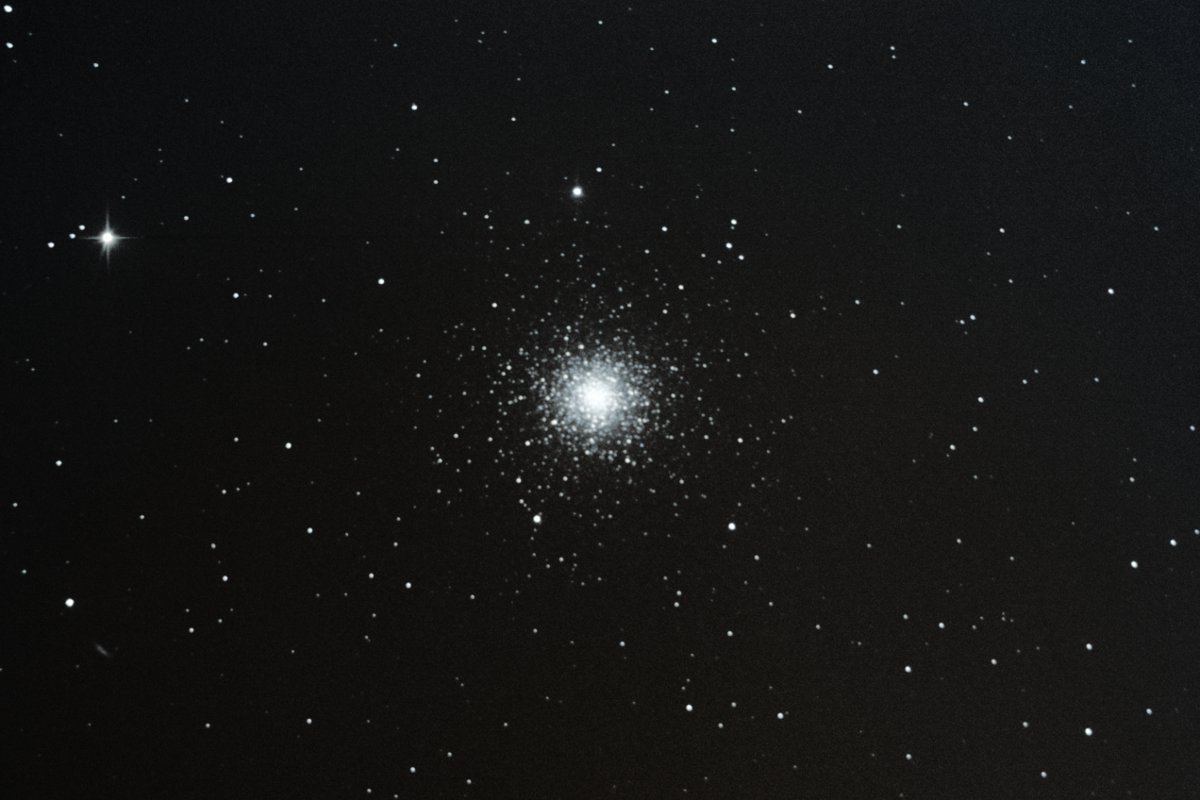Every so often something in the telescope makes me say “wow” out loud. In this case I’d spent quite a long evening galaxy hunting in Leo – these generally turned out to appear as smudgy stars and not much more. I finished off the evening by turning my attention to the M3 Globular Cluster in Canes Venatici – currently just rising in the east through mid to late evening. I love globular clusters – they are quite bright and pretty easy to locate. M3 is just visible in the finderscope and binoculars as a faint smudge of light. At lower powers it is pretty bright but hazy, with no distinct stars. At around x200 however, instead of looking directly at it I glanced to one side, and that’s when it hit me. A shimmering mass of stars, with many of them resolved to points, with bright stars appearing as lines through the centre. This averted vision can work wonders, as the edge of the eye is more sensitive than the centre.
I resolved to come back and photograph this, which I did later in the week. I seem to be refining the techniques for getting rid of camera noise and light pollution. This image is a stack of around 30 x 90 second exposures. I’m pretty pleased that the centre is not too burnt out and many of the star points come through well.

Globular clusters are tight clusters of tens, maybe hundreds of thousands of stars or more, ancient, and circling in a halo outside of the main disk and body of the our Milky Way. This particular cluster is some 8 billion years old, somewhat older than our own sun. Stars are often light minutes apart rather than light years. Imagine living somewhere in that lot!
